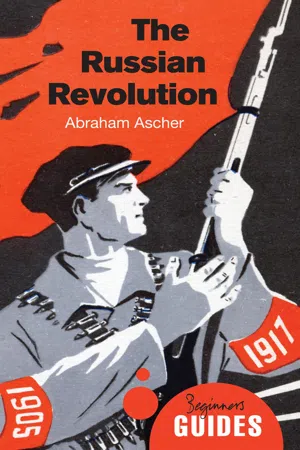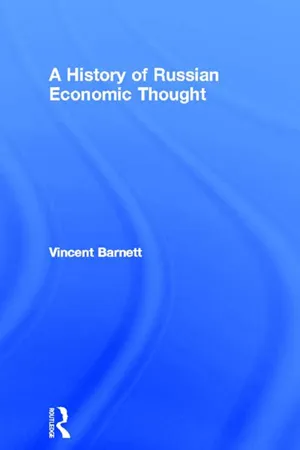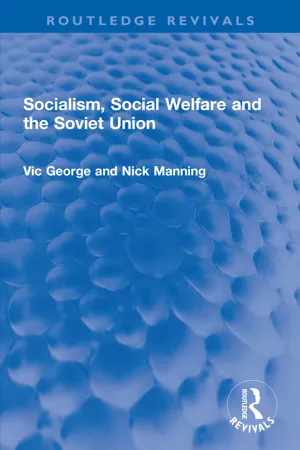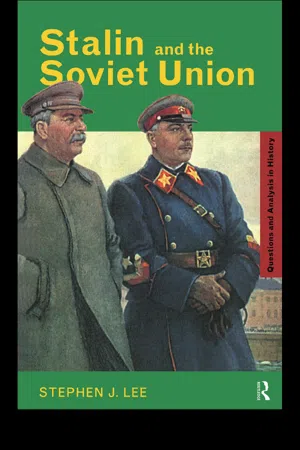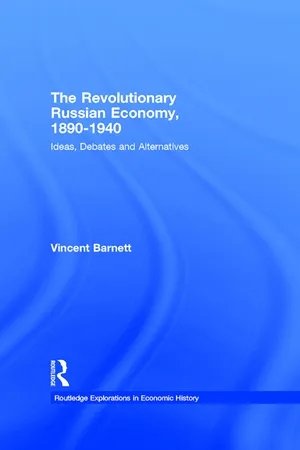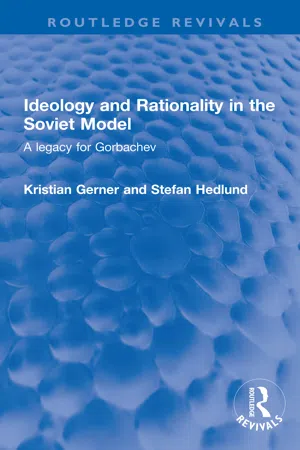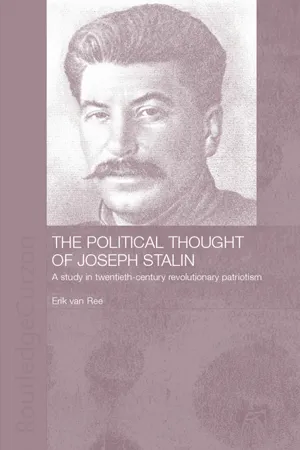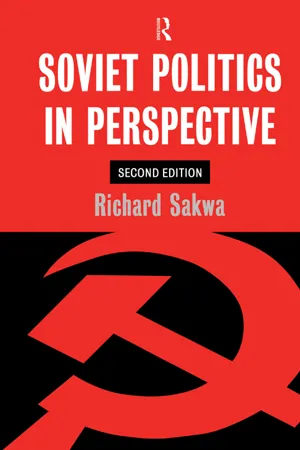History
Stalin's Economic Policies
Stalin's economic policies, implemented in the Soviet Union during the 1920s and 1930s, aimed to rapidly industrialize the country and collectivize agriculture. This involved the forced consolidation of small farms into large state-run collective farms and the implementation of central planning in industry. The policies led to significant economic growth but also resulted in widespread human suffering, including famine and political repression.
Written by Perlego with AI-assistance
Related key terms
Related key terms
1 of 4
Related key terms
1 of 3
8 Key excerpts on "Stalin's Economic Policies"
- eBook - ePub
The Russian Revolution
A Beginner's Guide
- Abraham Ascher(Author)
- 2014(Publication Date)
- Oneworld Publications(Publisher)
7 Stalin’s completion of the revolutionSome historians have referred to Stalin’s economic and political policies as a second revolution—often described as a ‘revolution from above’—because he abandoned the New Economic Policy, vastly increased the state’s role in the national economy, and sought to eliminate inequality of income. Stalin and his supporters claimed, correctly, that they were finally establishing the kind of socio-economic system envisioned by Marx and his earliest supporters.There can be no doubt about the radicalism of Stalin’s policies and achievements. Within a few years, the Soviet Union became an industrial state and a majority of the population could be classified as proletarian. Industry was tightly controlled by the government, which saw to it that the pay scale of workers would not encompass large differences. At the same time, the government introduced a program of collectivization of agriculture, which meant the elimination of privately-owned farms. The peasants, too, were provided with incomes that did not vary greatly from one to another.Although these changes were far-reaching, it is not self-evident that they constituted a second revolution. They may more accurately be seen as the fulfillment of Lenin’s plans and those of the Bolshevik Party generally in 1917–18. In its basic thrust, collectivization of agriculture was not all that far removed from War Communism, the economic system imposed on the Soviet Union between 1918 and 1921. At that time, economic power was also concentrated in the hands of the central government. Lenin abandoned his radical economic program not because he had changed his mind about its legitimacy or desirability, but because the economy had declined to a dangerous level. Whether or not he intended the partial return to capitalism that year to be permanent is not clear, but Stalin’s accomplishment in the economic sphere did not contradict Lenin’s earlier dreams for Russia and for the rest of the world. - eBook - ePub
- Vincent Barnett(Author)
- 2013(Publication Date)
- Routledge(Publisher)
Stalin was keen to provide theoretical characterisations of current states of economic affairs. As a characterisation of the Soviet economy generally, Stalin wrote in February 1931 that:we are conducting a planned economy, systematically accumulating resources and properly distributing them among the different branches of national economy.... The superiority of our system lies in that we have no crises of overproduction.19Whereas in capitalism such crises were apparently overcome by reducing the wages of workers and through mass unemployment, in a planned economy the absence of production anarchy meant that, according to Stalin, such problems did not arise. This view of the causes of economic crises owes a significant debt to the disproportionality component of Tugan-Baranovsky's account of trade cycles, although Tugan-Baranovsky himself was of course never mentioned in Soviet economic literature from this period.Stalin was later keen to propound what he called the ‘economic laws of socialism’, which in truth were merely vague phrases that characterised his currently favoured policies. Examples of such ‘economic laws’ were the law of the priority development of means of production and the law of the harmonious development of the national economy, which were obviously not ‘laws’ in any genuinely scientific sense, rather they were simply practical policy aims. In terms of the results of the first five-year plan, Stalin wrote in January 1933 that:Maintaining doctrinal righteousness was an important element in Stalin's personal authority, socialism in one country being a key plank of his own policy programme at the end of the 1920s.The results of the Five-Year Plan have shattered the thesis of the Social-Democrats that it is impossible to build socialism in one separate country.... The results of the Five-Year Plan have refuted the assertions of bourgeois economists that the capitalist system of economy is the best of all systems.20Stalin sometimes personally entered the ideological battle against individual economic specialists directly. For example in December 1929, Stalin attacked Groman by name for suggesting that 1917 brought no advantages to the peasantry, this idea being taken up by the ‘Trotsky-Zinoviev opposition’. Bukharin's heretical ideas were the subject of a long invective by Stalin entitled ‘The Right Deviation in the CPSU’ from 1929. Moreover, Stalin took a keen personal interest in the fate of pro-market economists such as Kondratiev and Yurovsky who had been arrested on his orders in 1930. While Stalin also intervened in many other areas of intellectual endeavour, special attention was given to the fortunes of economists in the late 1920s and early 1930s, when Stalin was consolidating his personal dictatorship, as economists possessed that specialist knowledge which might have served to undermine Stalin's pretensions to theoretical precision. In general it can be concluded that Stalin's economic pronouncements had no genuine originality or theoretical worth to them at all, except as an indication of his own over-inflated ego. Whilst undoubtedly a skilled bureaucratic manipulator, as a theorist he was a resounding dud. - eBook - ePub
- Vic George, Nicholas Manning(Authors)
- 2021(Publication Date)
- Routledge(Publisher)
6THE POLITICAL ECONOMY AND SOCIAL POLICY OF THE USSRThe primary concern of this chapter is the inter-relationship between social policy and the political economy of the Soviet Union. It is an examination both of the constraints and opportunities through which the political and economic system affects social policy and of the influences of social policy on that system in its professed attempt to industrialise and create a fully socialist, i.e. communist, society.We need to discuss first, however, the nature of the political economy and of social policy. Some repetition of points made in passing in previous chapters is inevitable but it is necessary in order to prepare the ground for the main discussion of this chapter.The political economy of the Soviet Union*
Unlike the relatively clear distinction which can be drawn between economic and political systems in capitalist societies, we shall have to consider the political economy of the Soviet Union as an interlocking whole. The economy is shaped by two key principles: the public ownership of the means of production, and the centralised planning of major production and distribution decisions.1 We characterise it as centralised state socialism. It aims to generate surplus (as must all economic systems) but the accumulation and distribution of this surplus is determined primarily according to the political aims of the Communist party acting through the central government administrators rather than by the profit-maximisation typically pursued by private owners of capital in capitalist societies.The political determination of priorities occurs at the top of the hierarchy of power in the central committee of the party. Decisions reached here are transmitted down according to the principle of democratic centralism. This has resulted in a very centralised hierarchical system whereby all levels, from enterprises or small city soviets upwards, are accountable to those above. In terms of economic and social activity this can often mean subordination to three authority systems: the soviet, the relevant ministry and the party, not all of which necessarily agree on all policy issues. However the party has become the dominant authority: - eBook - ePub
- Stephen J. Lee(Author)
- 2005(Publication Date)
- Routledge(Publisher)
Some historians go further still, in denying Stalin any of the credit (or blame) for the decision to introduce collectivisation. The main argument here is that Russia was moving in this direction anyway and that Stalin went with the momentum. According to J.Arch Getty, although Stalin was officially responsible for collectivisation, he was strongly influenced by ‘the social, economic and political environment that he did not create’. (3) A possible synthesis would accept Stalin’s ruthlessness and willingness to use force while, at the same time, downgrading his understanding of the underlying economic forces. The economy was not within his expertise, whereas the consolidation of personal power was. Hence political criteria dominated the economic. By 1927 there were two examples of this. One was the prospect of political humiliation caused by the procurement crisis. Stalin was faced with the choice of making further concessions or taking a tougher line. The other was the opportunity to cut down his remaining opponents, especially Bukharin, who favoured the continuation of the NEP. Hence he took a strong political decision—which is not the same as merely drifting into it. It was, however, along the lines of a policy towards which Russia might have been moving anyway. Effects The impact of Stalin’s policies needs to be examined in terms of the speed with which collectivisation was carried through; the effect on productivity; the reaction of the peasantry to their new orders; and the extent of suffering caused by rural disruption. Finally, new light has been shed on the extent to which agriculture actually subsidised industrial growth. The standard argument is that agriculture was sacrificed to the development of industry. The emphasis was on collectivisation to destroy individual consumerism. Hence, one of the criteria for success was surely the number of units actually collectivised. In this respect the process went ahead with remarkable speed - eBook - ePub
- Vincent Barnett(Author)
- 2004(Publication Date)
- Routledge(Publisher)
Overall the plan projected a significant increase in national income – by 80 per cent by 1942 – and a large rise in gross industrial production – by 92 per cent by 1942. However the average money wage of workers and employees was to grow by only 37 per cent over five years, and the portion of consumption in total national income was to be less in 1942 that it was in 1937. Zaleski described the plan as one of great austerity. Perhaps this was partly so due to the looming shadow of war, and since goals for labour productivity were set quite high – an average increase of 65 per cent over five years – no slackening was to be allowed in the further development of labour discipline. The third five-year plan was of course disrupted by the outbreak of war in 1940, although a concerted effort to preserve many of the initial goals of the plan was made.The results achieved by Stalinist economyFigures vary widely for the actual annual rate of growth of Soviet industry that was achieved between 1929 and 1940. Some official Soviet figures claimed an annual rate as high as 21.7 per cent, whilst some more conservative Western estimates put the figure at 7.1 per cent.19 Even this lower figure is certainly impressive in itself, especially when compared with many Western economies that were in depression in the 1930s, but it does not give much indication of the quality of products that were manufactured or of changes to labour productivity. New industries such as armaments and agricultural machinery had been established in the USSR virtually from scratch, together with significant improvements in those industries making their raw material inputs such as iron and steel, but progress in the manufacture of consumer goods was much less significant. Important demographic changes also occurred, with large-scale factories absorbing workers from declining small-scale manufacture. The fact that the production of capital goods received significant priority had led to some spectacular technical achievements, but as those victims of the 1932–1933 famine in the Ukraine might attest, human beings cannot eat iron and steel.What of the more intangible elements of Stalinist economy? Were the new forms of socialist economy created in the 1930s clearly less exploitative than their capitalist counterparts? As might be expected, it all depends on how you interpret the term exploitation. The living conditions of most Soviet workers actually declined in the first half of the 1930s, with poor housing, falling real wages and inadequate diet being common, but on the other hand some public services such as education and health provision improved. It is very likely true that some workers at least genuinely believed in the idea that they were working for the socialist future, and hence their state of mind in the workplace might well have been more positive than it was in Tsarist times. Whether ordinary people in fact had more control over their daily work activities than they did in capitalist forms of economy might be disputed, but they were probably a little happier than (at minimum) their unemployed counterparts in the USA at this time. - eBook - ePub
Ideology and Rationality in the Soviet Model
A legacy for Gorbachev
- Kristian Gerner, Stefan Hedlund(Authors)
- 2022(Publication Date)
- Routledge(Publisher)
Not only was this true of statements from the top political leadership, which would have been serious enough, it even came to encompass the entire profession of economics and would thus have quite important long-term implications for the running of the Soviet economy. As we have seen in Chapter 2, by the mid-1930s, all prominent Soviet economists had been either shot or otherwise silenced. For the remainder of Stalin’s rule, economics was reduced to a mechanical regurgitation of suitable quotations from the founding fathers and to the blatant ritual praise of the ‘wise leadership’ of the Great Leader, the vozhd. In his 1952 textbook Economic Problems of Socialism in the USSR, Stalin himself added insult to injury by stating that ‘burdening economics with questions of economic policy would mean destroying it as a science.’ 3 Seen from the point of view of a destruction of human capital, this philosophy represented nothing short of a disaster, as a whole generation of Soviet economists was trained in the rejection of all those tools which really ought to have made up the very essence of their profession. Such was the price that was to be paid by future Soviet generations for Stalin’s method of suppressing opposition to forced collectivization and to what Naum Jasny has referred to as ‘Bacchanalian planning’. 4 Of course, much has been done since that time, in an effort to remedy the consequences of this part of Stalin’s legacy, but the results of that effort have not been overwhelming. It is symptomatic, for example, that under Gorbachev’s current policy of perestroika, many Soviet economists appear to be almost childishly pleased that the top leadership is finally ready at least to listen to what they have to say - eBook - ePub
The Political Thought of Joseph Stalin
A Study in Twentieth Century Revolutionary Patriotism
- Erik van Ree(Author)
- 2003(Publication Date)
- Routledge(Publisher)
However, this extremism did not last. Under the impression of economic dislocation caused by his extremism, the leader finally put an end to the madness in January 1933. He claimed that in the future industrial growth rates would still remain higher than in capitalist countries, but it was now possible to return to a policy of “less accelerated tempos.” 12 In July 1934, Stalin distributed an angry letter to the Politburo, criticising a recent article by Bukharin in Izvestiia for, among other points, having covered up the fact that heavy industry was the “leading and reorganising” branch of the economy. 13 Thus Stalin did not abandon such fundamental points, but the time of pure extremism was over. Next to accelerated industrialisation, with a heavy industrial focus, the second pillar of early Stalinist economics was the twin campaign of collectivisation and dekulakisation. Stalin interpreted the unpreparedness of the peasants in the winter of 1928 to sell their grain against the price he found acceptable as a form of class struggle, and he was prepared to meet the challenge head-on. In July 1928, he famously noted that: as we move forward, the resistance of the capitalist elements will grow, the class struggle will become sharper, and Soviet power, of which the forces will grow ever more, will carry out a policy of isolation of these elements, …a policy of suppression of the resistance of the exploiters. 14 In 1923, Lenin had proposed to shift the “centre of gravity” of the party’s activities to “peaceful organisational ‘cultural’ work” as the way to convince the peasants to join the co-operatives. 15 The leader of bolshevism did not make a pledge that under different circumstances a violent course in the countryside would be excluded. Nevertheless, Stalin’s new course represented a major tactical change compared with the course set in the early 1920s - eBook - ePub
Soviet Politics
In Perspective
- Richard Sakwa(Author)
- 2012(Publication Date)
- Routledge(Publisher)
Part IV PoliciesPassage contains an image
14 The Command Economy and Reform
DOI: 10.4324/9780203058237-18While human emancipation might have been the goal of Marxism, Leninism in power soon became an ideology of development. Industrialisation became the raison d’être of the Soviet state. This was not simply a matter of ‘modernisation’, since the process was as contradictory as the term itself: while the Soviet Union built the basic infrastructure of a modern mediumdeveloped society, many of the social attributes typically associated with a ‘modernised’ society were missing – above all the openness to innovation in the technological and political spheres. The Soviet economy was able to achieve most of the goals it set itself and joined the front ranks of industrial powers through its ability to mobilise resources. Prestige projects like the great steel city of Magnitogorsk, the Kama River truck plant (KAMaz) or the Baikal–Amur Mainline railroad (BAM) stand as testimonies to the Soviet pattern of development. This campaign approach to economic development led Oskar Lange to liken the Soviet economy to a war economy, where all resources are concentrated on certain narrow ends, but of human emancipation little remained.Planning and Political Economy
Political economy is related to historical materialism and seeks to explain the relationship between economics and politics. Marx believed that after the revolution political economy as a subject would become redundant since, in the absence of capitalist exploitation, socialist economic relations would become transparent. Reluctantly, however, Soviet scholars were forced to concede the need to study their own political economy. This was made all the more urgent since instead of inheriting a mature economic system ripe for socialism, the Bolsheviks took over from capitalism an unevenly developed country dislocated by years of war. The Soviet Union became what Alexander Eckstein called a mobilisation regime devoted to rapid economic progress. Economic performance and governmental practice became linked.
Index pages curate the most relevant extracts from our library of academic textbooks. They’ve been created using an in-house natural language model (NLM), each adding context and meaning to key research topics.
Explore more topic indexes
Explore more topic indexes
1 of 6
Explore more topic indexes
1 of 4
